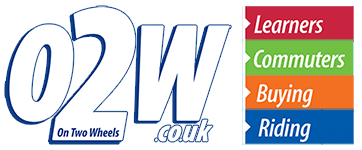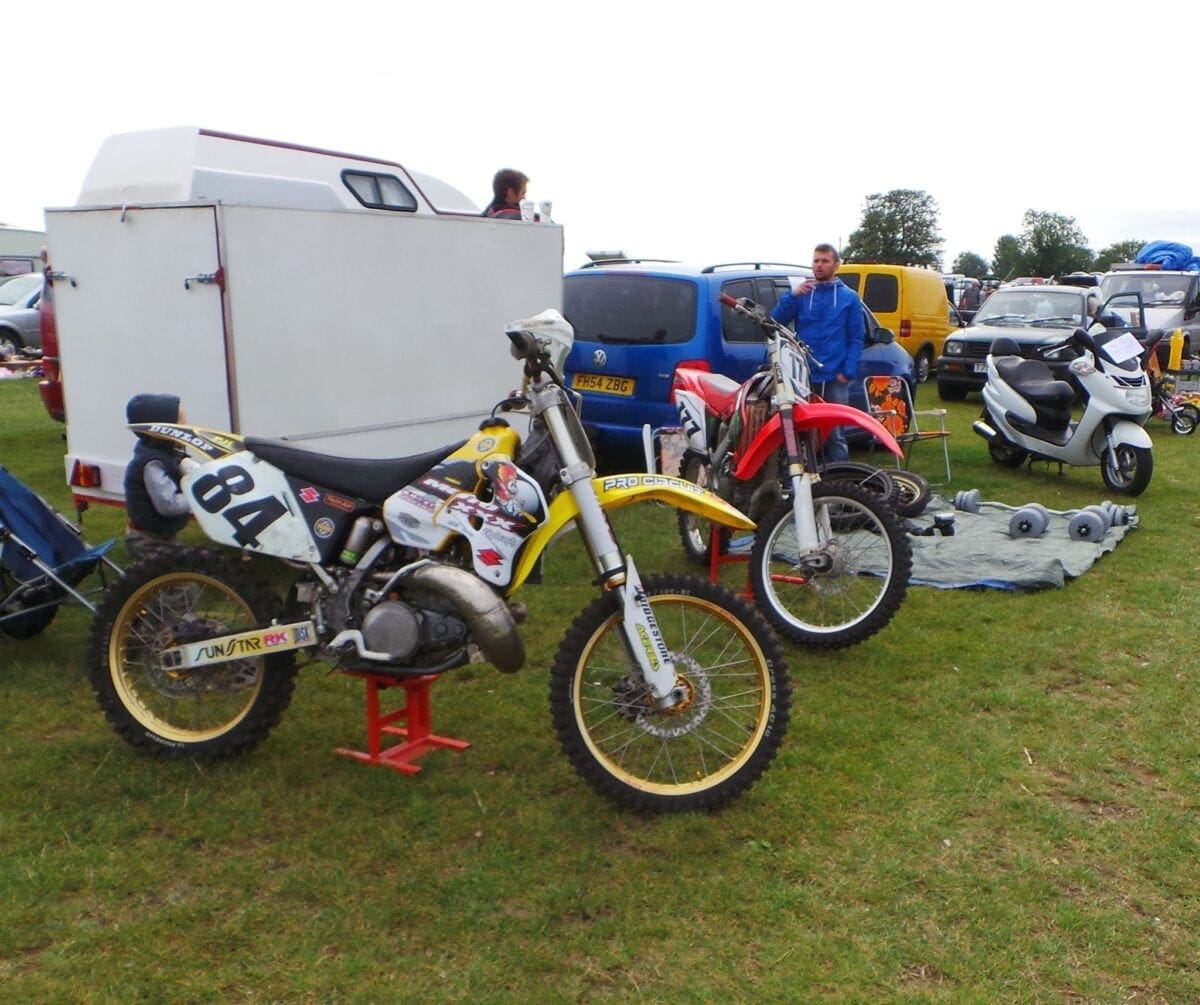If you’re on a tight budget, then buying pre-owned could be the way to go – not only for your machine choice, but for your clothing and accessories as well. Mau takes a trip to a local boot fair to see what bargains are available and what the pitfalls are…
Not everyone can afford to buy the brand-spanking new machine, let alone the necessary clothing and accessories that go along with it. If you are considering pre-owned equipment, then your friendly local motorcycle dealer might have the machine you’re looking for; but very rarely do they have pre-owned clothing or accessories, so if you’re looking to save a penny or two, then you have to be more resourceful.
A motorcycle auto jumble would be a good place to start your hunt and would be the place you’d be most likely find specific bike parts, manuals and accessories. The downside of a motorcycle auto jumble is that the seller will be pretty firm on what they can expect to achieve price-wise and it’s not unusual for them to overvalue their wares. Move away from the dedicated auto jumble scene and what else is there? Well, a visit to your local boot fair might reveal a few surprises…
A trip to my local boot fair wasn’t intended as a bike bargain hunt – all I was after was some fresh fruit and vegetables. But wandering around, it became pretty clear quite quickly that there were bargain to be had and things to be avoided. Here’s a quick guide to what to watch out for:
Enjoy everything More Bikes by reading monthly newspaper, Read FREE Online.
CRASH HELMETS
Used crash helmets are an absolute no-no under any circumstances; NEVER COMPROMISE YOUR SAFETY for the sake of saving a few quid – you only have one head, so make sure you protect it in the best way you can. There may be no visual signs of any damage, but you can never be 100% certain; it may appear to be unmarked, but there could be an unseen hairline fracture, or a worn strap fastening clip that may not appear to have anything up with it. If budget is an issue, then buy a cheap new helmet in preference to a used ‘bargain’.
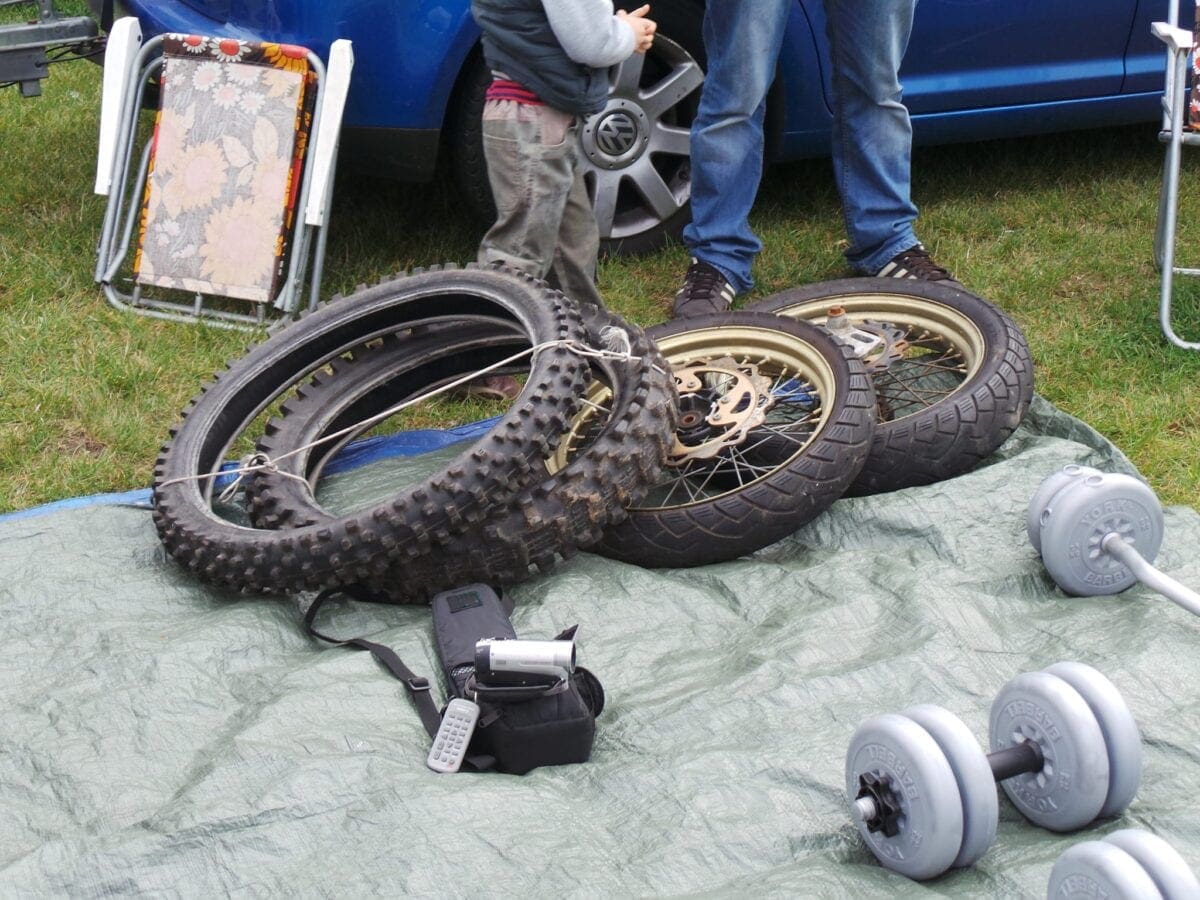
TYRES
Tyres are another safety item to be cautious of. They can be bought second-hand if money is really tight, but they are better off being purchased from a tyre dealer, rather than a boot fair, as the dealer will have checked both their safety and legality aspects. Buying from a boot fair comes down to you and you alone; take what the jumbler says with a pinch of salt and examine the tyre carefully. Look at the tread and sidewalls for any damage caused by tyres, nails, or even tyre kerbing; if the tyre isn’t being sold on a rim, look at the inside as well. You also need to check the legality of the tread, which is different to a car or van (the limit for a bike tyre is 1mm across three quarters of the tread and a ‘visible’ tread pattern of the remaining quarter). Something else to take into account if buying a used tyre is that you may also need an inner tube – and someone to fit both of them for you.
[If you want to know more about tyres, then take a look at the article on pages 76-77 of T&G issue 93, where we explain how to read the tyre information to find out what speed/safety regulations they conform to and also how old they are].
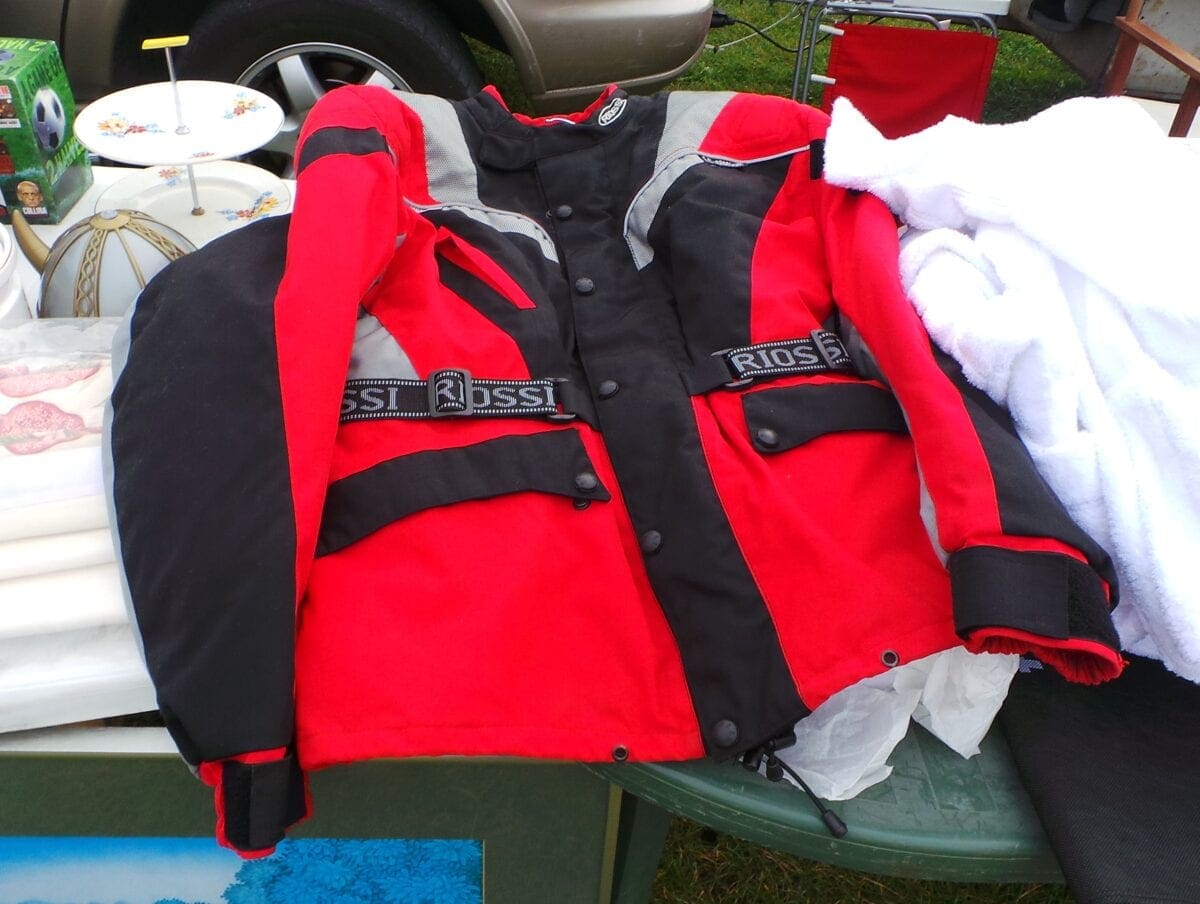
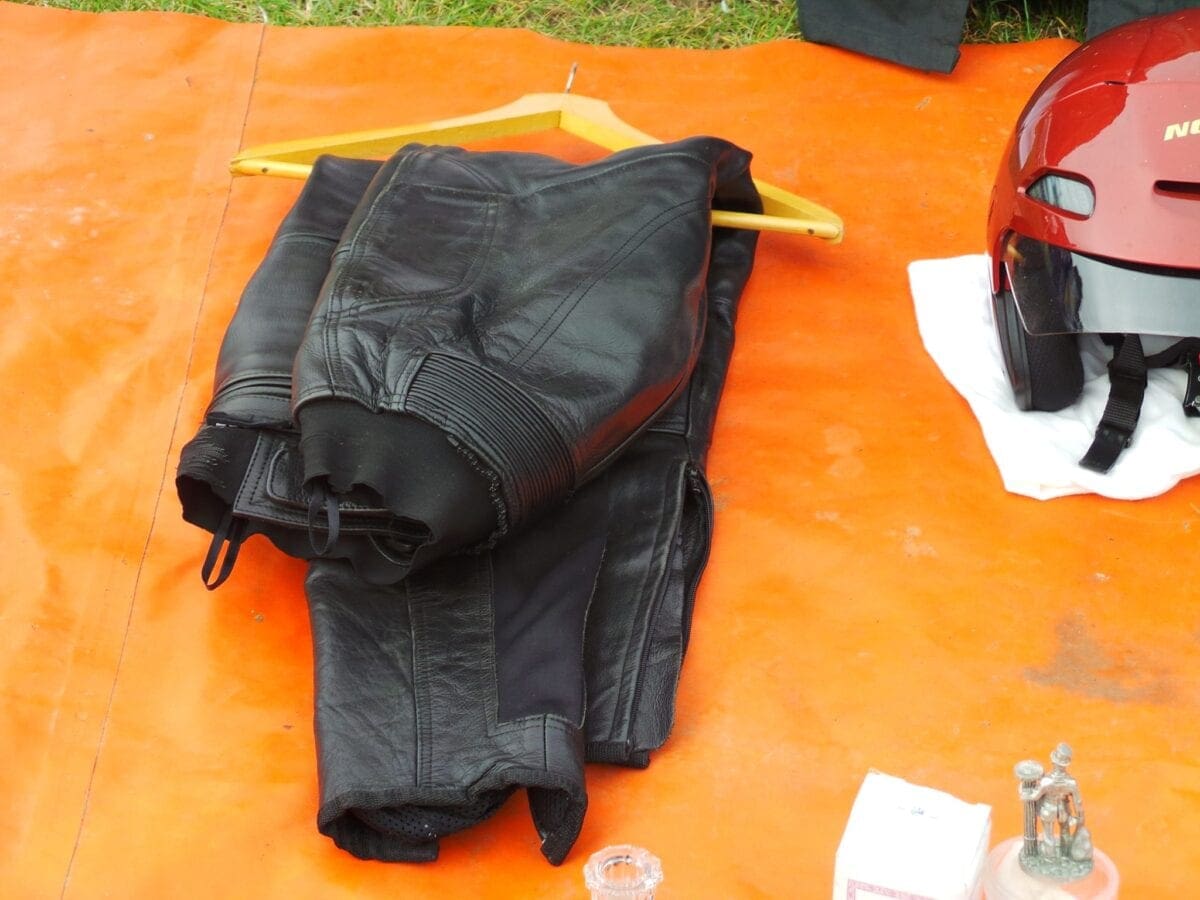
CLOTHING
Modern garments would normally have a production date shown somewhere. Check this out, because if the garment is old, then the stitching could be either rotten or compromised in some way and it could fall apart. There could also be an issue with weather proofing properties (is it still waterproof after years of use)? Something else to look at is fastenings; Velcro can wear after a period of time and poppers can get worn; check that zips operate correctly.
OILS & ADDITIVES
These are something else that has a recommended shelf life. Look for clues as to how old the item is, or if it has been opened (once a seal is broken some liquids can deteriorate quite quickly). A broken container seal could also indicate that the contents have been tampered with by an unscrupulous trader – and that top quality oil you thought you were buying could turn out to be a cheap substitute! The state of a container should also be a clue to its contents as well and a rusty tin could be a giveaway.
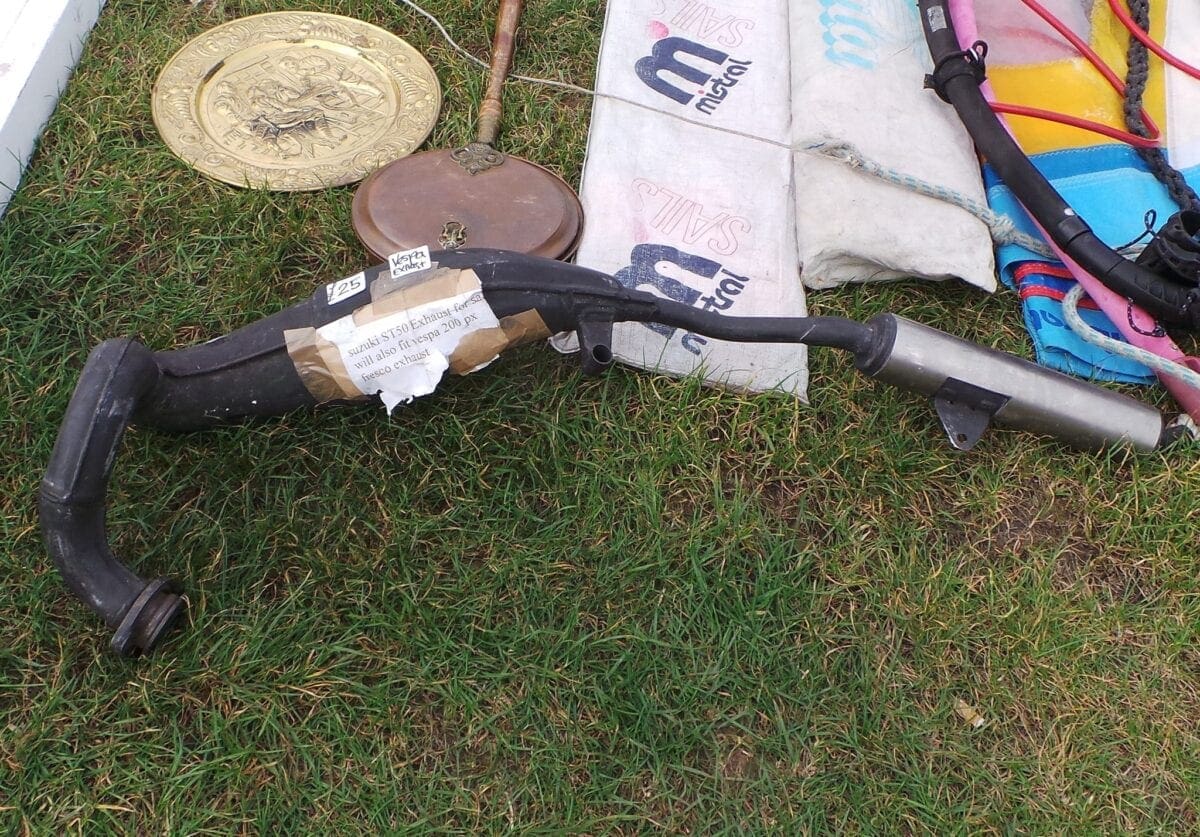
EXHAUSTS
These can be a bargain, but again they need checking carefully. Feel the weight of them and if they feel heavy, then they could be coked-up with carbon. Visually check them over to make sure to get an idea of the condition; if they’ve been repainted, then ask yourself why? Also check for any information (an ‘E’ or ‘Kite’ mark, for instance) that would give a clue to both emissions and noise legality. Some manufacturers will mark their exhausts ‘for show use only’ – which means they are illegal for road use; and if you get caught using them ‘on road’, then you could earn a few points on your licence.
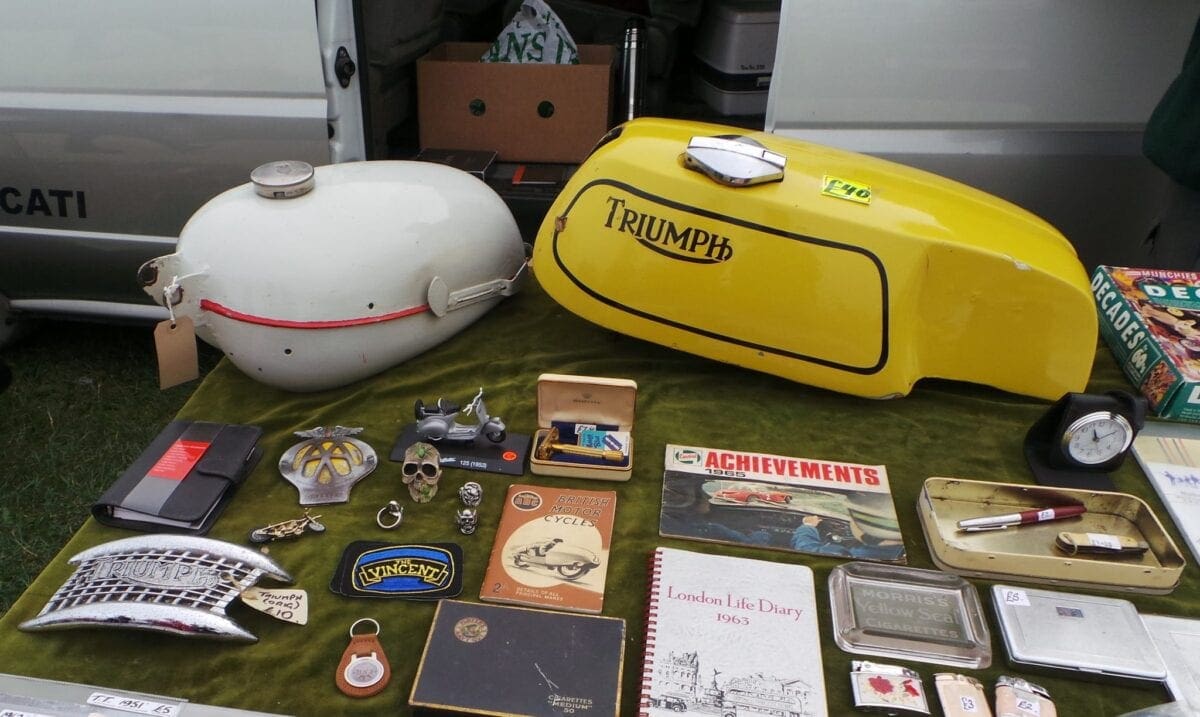
FUEL TANKS
Check the inside of a metal fuel tank very carefully, as any rust or corrosion could result in particles getting into the fuelling system – it’s very easy to block-up a carburettor. If in doubt, clean thoroughly before use.
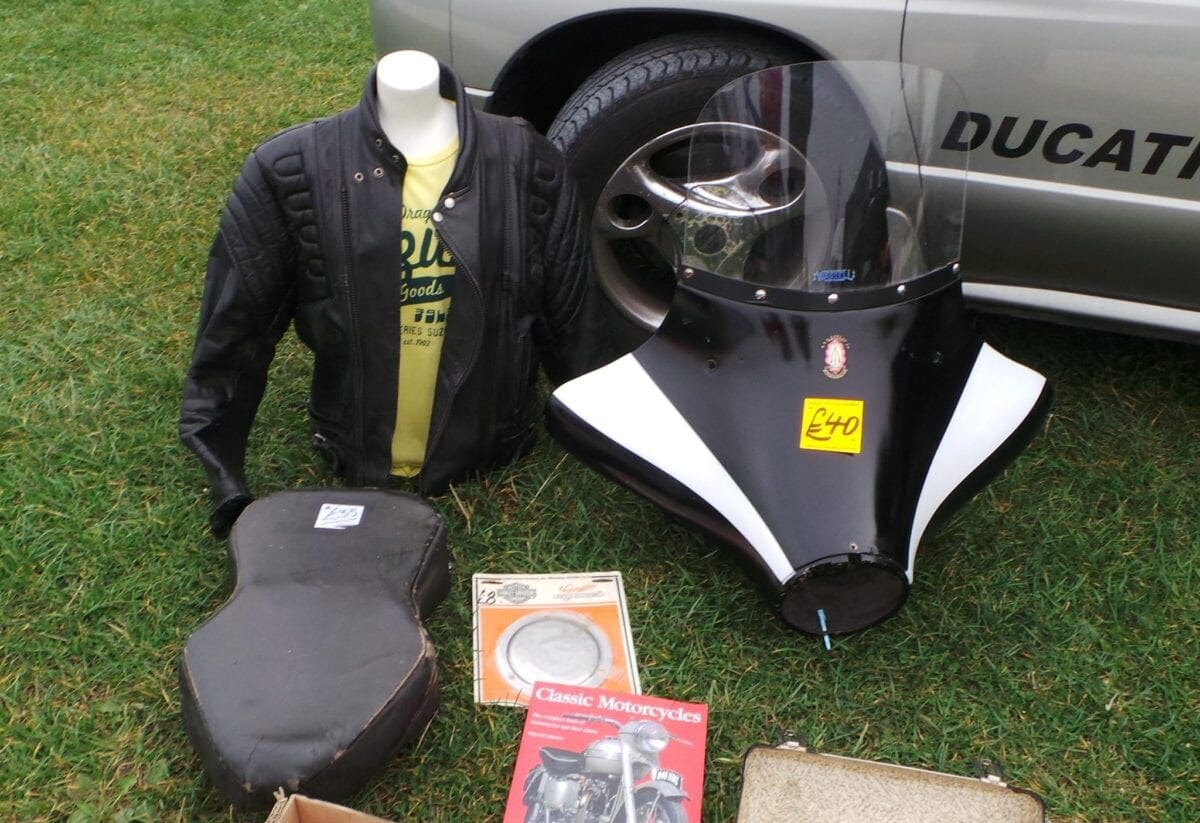
ACCESSORIES
Something to watch out for with accessories is do they actually fit your machine; a topbox or a carrying rack, for instance, could require a specific fitting kit. Check that the item has one with it, and that if fits your machine. If it doesn’t, then you need to check that other fitting options are available and that the price doesn’t turn a bargain into a costly exercise.
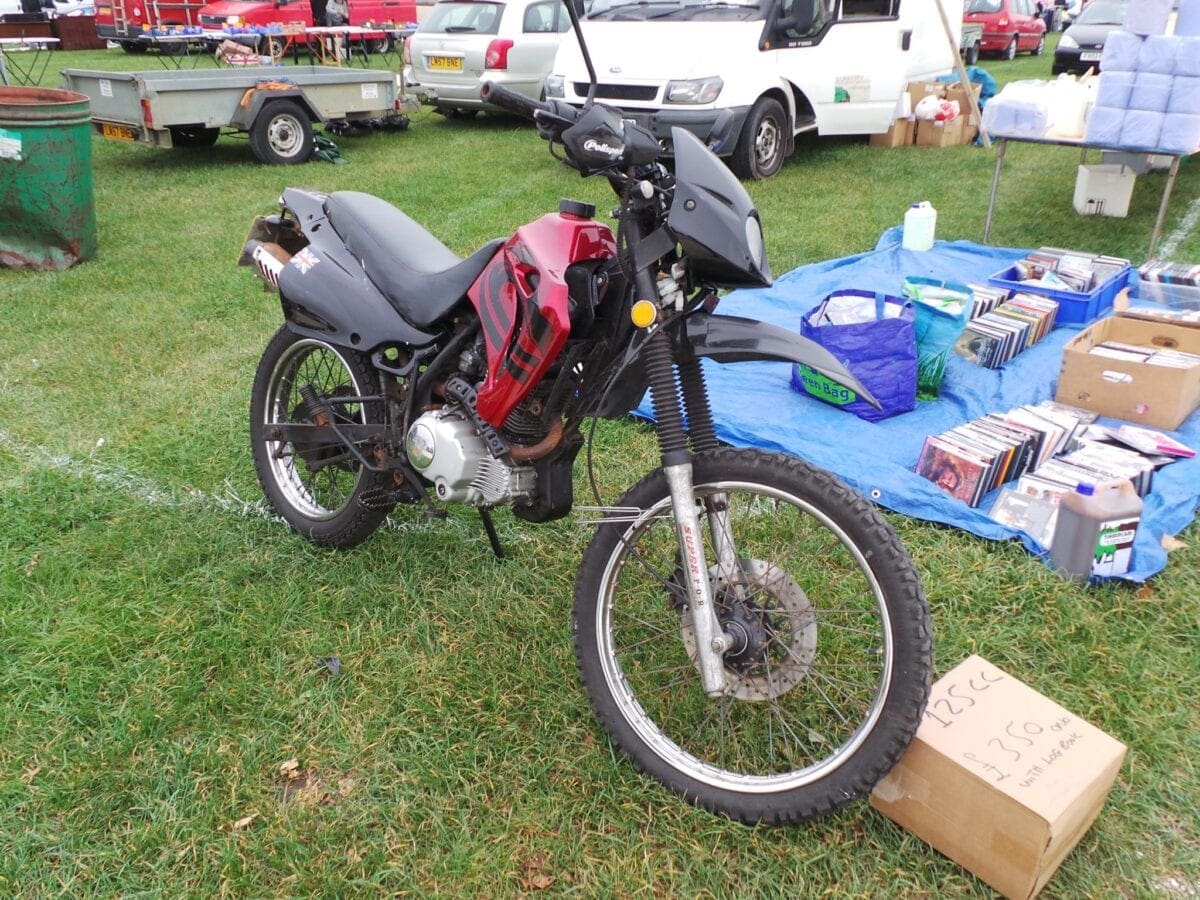
USED BIKE GUIDE
We’ve talked about clothing and equipment, but what about buying a bike itself. The same basic principles apply whether you’re buying from a bike shop or a boot fair, so that is fairly straightforward. What might not be so straightforward at a boot fair is whether the person selling is a private individual selling-on his machine, or is in fact a dealer trying to pass themselves off as one. If someone has more than one bike for sale, then you need to check out whether they are trade or not, as your consumer rights could be affected. Don’t be afraid to ask them questions, not only about the bikes, but about them as well and if they haven’t declared themselves as being a trader, then here’s a few questions that could give the game away:
Is it your name in the logbook?
How long have you had it?
Why are you selling it?
Why do you have more than one bike for sale?
The answers given could give you a clue.
BAG A BARGAIN
Don’t be put off if all of this sounds a bit daunting, as you can still pick up a good bargain. And if you’re still not sure, then take mate along with you to give advice – two heads are better than one.
Advert
Enjoy everything More Bikes by reading the MoreBikes monthly newspaper. Click here to subscribe, or Read FREE Online.
